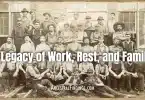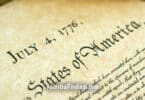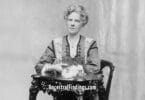It seems hard to imagine a time before there was television. It is such an ingrained part of nearly everyone’s life now. As of 2013, 79 percent of households on the planet had at least one television in them. Even those households without television are likely not ignorant of its existence and have probably seen television in public places. So, how did an invention of such worldwide importance come into being? The history of television starts farther back in time than you may think. Here’s the story of the television.
The word “television” is a combination of two ancient Greek words meaning “far” and “sight,” so, in other words, television means to be able to see things from a far away distance. The modern word was first used in 1900 in a paper by Russian scientist Constantin Perskyi that he presented at the First International Congress of Electricity. At the time, television was just a theoretical concept as a means for transmitting still photographic images over telegraph lines. The commonly abbreviated term “TV” didn’t come into use until 1948. Once television was invented and started broadcasting, the term “television set” was used until the abbreviated “TV” came into common use.
Experiments with transmitting still photographs over telegraph and telephone lines date back to the mid-1800’s, starting in 1843 when inventor Alexander Bain introduced a prototype version of a fax machine using the telegraph. It only worked in theory. The first working fax machine was demonstrated in a lab in 1851 by inventor Frederick Bakewell. These fax experiments became the basis of what would eventually become television.
The transmission of images in early fax experiments took time. The first instant transmission was done in 1909. The image could be updated by sending additional images several times per second, which gave the visual equivalent of a moving image, even though it was all being done with still photographs.
Additional experiments continued until 1926 when the first genuinely moving image was transmitted from one machine to another in 1926. This was done by Scottish inventor John Logie Baird and his partner, Oliver Hutchinson. This jump in technology was made possible by amplifying the power of the cables and wires used to transmit telegraph and telephone information. The 19261 demonstration of televised moving images was given by Baird at Selfridge’s Department Store in London, UK. The images he transmitted where silhouettes. This was because the technology was not yet high enough to show the details on a human face. A human face did not have enough contrast to appear on the primitive machine.
Baird kept experimenting with television technology and soon transmitted moving images of a ventriloquist’s dummy that had a painted face with enough contrast to show up on the machine. Later, Baird transmitted a picture of a human face in motion using radio waves (the face in question being his partner, Hutchinson). This demonstration is generally considered to be the first real televised broadcast.
Hutchinson’s face was able to be shown with detail on the television thanks to neon lighting to give it enough contrast. In 1927, Baird showed these images could be transmitted long distances by setting up a successful television broadcast between London and Glasgow, at a distance of 438 miles.
Baird kept going with his experiments in television. He set up a company called the Baird Television Development Company/Cinema Television in 1928. During that same year, Baird successfully completed the first transatlantic television broadcast between London and New York City. It was accomplished via shore to ship transmission of the radio signal. Baird helped set up the world’s first television station in 1928 in Schenectady, NY at the General Electric facility there. The station was known as WRGB and commonly called WGY Television. Baird soon helped set up television broadcasting companies in the UK (starting with the BBC, which is still broadcasting today), then in Germany, then in France. By 1931, he was able to transmit an outdoor remote broadcast of the Epsom Derby.
Up until the mid-1930s, mechanical television using radio waves and telegraph and telephone lines was the only way of transmitting television, and this method was most assuredly perfected by Baird, based on the fax experiments of the past. In the 1930’s, other television companies invented electronic television, which used cathode ray tubes to transmit images. These soon became the main form of television, and the last mechanical television broadcast was in 1939. Electronic television was the only method of television broadcasting until digital, and then internet-based television broadcasting was invented in the 1990’s. Today, electronic television is almost a thing of the past in the developed world, and digital and internet TV are what most people use. But, without the early fax experiments and the pioneering television work by Baird, there would be no TV at all. Baird, a little known Scottish inventor, changed the world.
Read More
 |
 |






